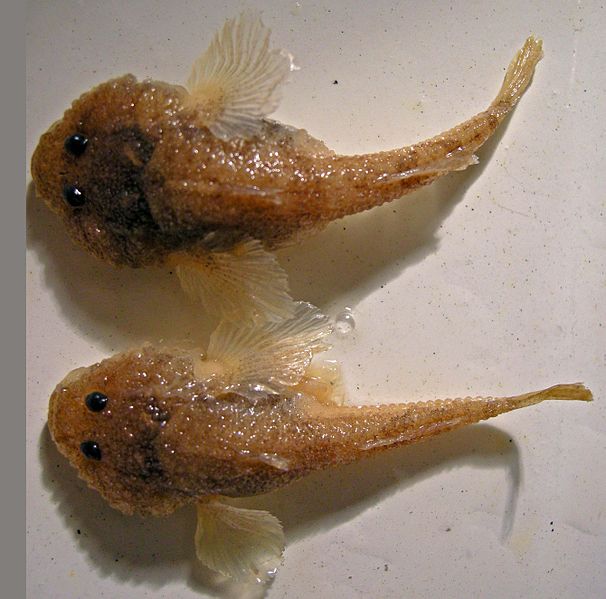 |
| Azov Tadpole-goby |
A higher clade it's part of: Gobiidae (gobies)
Conservation status: 8 Least Concern, 12 not evaluated
Current range: Fresh and brackish water in Caspian and Black Sea basins
 |
| Black Sea Tadpole-goby |
 |
| Don Tadpole-goby |
They're carnivorous, eating small molluscs, insect larvae, and crustaceans. The species mentioned above live on sandy or muddy bottoms (depending on the species) with scattered empty shells. They need the shells because they hide their eggs underneath or inside them. They only live a year or so and die after spawning.
Tadpole-gobies diverged from the tribe they're most closely related to (Neogobiini) about 9 million years ago. Benthophilus diverged from the only other genus in its tribe (Benthophilini), Caspiosoma, about 5 Million years ago, coincident with the separation of the Black and Caspian Sea basins as they dried out. Tadpole gobies (at least, the ones sampled in the phylogenetic analysis listed below) diverged from one another about 2 million years ago, near the onset of the Pleistocene ice ages.
Neilson, M. E., & Stepien, C. A. (2009). Escape from the Ponto-Caspian: evolution and biogeography of an endemic goby species flock (Benthophilinae: Gobiidae: Teleostei). Molecular Phylogenetics and Evolution, 52(1), 84-102.
Eeek! I did not expect to find them cute, but don tadpole-gobies are almost cuddly-adorable! They look more like cartoons than real fish.
ReplyDelete